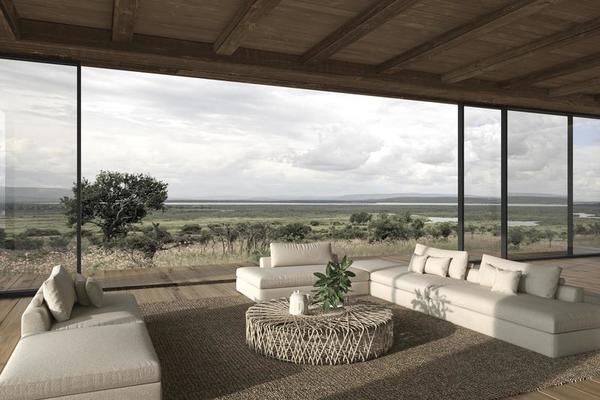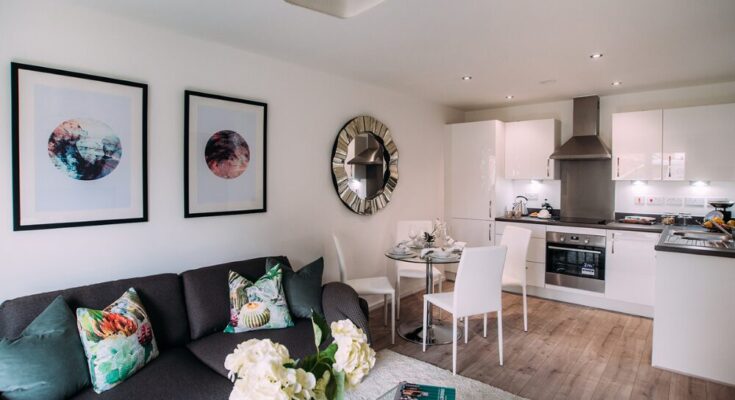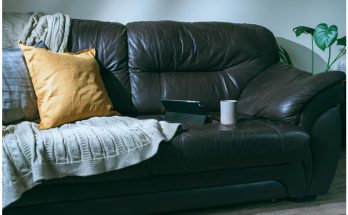Open spaces have become a defining feature of modern architecture and interior design. Whether in homes, offices, or commercial settings, open layouts offer a sense of airiness, flexibility, and connection. However, without clear spatial definition, they can also feel disorganized and chaotic. The absence of walls doesn’t mean a space lacks structure—it simply requires a more creative approach to organization.
Invisible boundaries are the subtle cues that divide an open space into functional areas without the need for solid partitions. They create a sense of order while preserving the openness that makes these layouts so inviting. By using furniture placement, lighting, color variations, and textures, we can subtly distinguish spaces while maintaining a cohesive flow.
Why Invisible Boundaries Matter in Open Spaces
Invisible boundaries play a key role in defining how we use and move through a space. Without them, an open space can feel undefined and lacking purpose, making it difficult to establish a clear function for different zones. When thoughtfully designed, these boundaries:
- Improve organization by creating distinct areas for specific activities.
- Enhance comfort by preventing spaces from feeling too vast or disconnected.
- Support movement flow by guiding traffic patterns within a room.
- Encourage flexibility, allowing spaces to adapt to changing needs.
Whether in a home’s open-concept living area, an office’s collaborative workspace, or a retail store’s shopping experience, invisible boundaries provide the necessary framework for efficiency and ease of use. A well-designed open space should feel both expansive and structured.
When done right, invisible boundaries give a space purpose, coherence, and a sense of belonging without making it feel constrained.

Techniques for Creating Invisible Boundaries
Using Furniture
Furniture is one of the most practical and impactful ways to establish invisible boundaries. Its placement can subtly indicate where one area ends and another begins, guiding movement while keeping spaces open and accessible.
- Sectional sofas and modular seating. Sectional sofas are natural space definers. Positioned thoughtfully, they create a distinct seating zone within an open living area, subtly marking the boundary between the living and dining spaces. Modular seating, which can be rearranged to fit different layouts, offers the flexibility to shift boundaries as needed.
- Bookshelves and open storage as subtle dividers. Freestanding bookshelves, open storage units, or console tables can function as dividers without fully enclosing a space. Unlike solid walls, they maintain a sense of openness while giving each area a clear function. These elements also offer storage solutions, keeping spaces both defined and organized.
- Rugs. Rugs are visual anchors that help ground a space and differentiate one area from another. They add warmth, texture, and structure while helping define functional zones in an open-concept design. A large area rug beneath a seating arrangement signals the living area, while a smaller rug under a dining table establishes the dining space. By visually enclosing these areas, rugs provide subtle but effective zoning. Layering rugs—placing a smaller patterned rug over a larger neutral base—can emphasize key zones while adding texture and depth to the design. This technique works especially well in bohemian or eclectic interiors. An improperly sized rug can make a space feel disjointed. A rug should be large enough to extend beyond key furniture pieces, ensuring the zone feels well-defined and cohesive.
- Lighting. Lighting plays an essential role in defining and differentiating zones. Well-placed light sources create focus and structure, making different sections of an open space feel distinct. A chandelier or pendant light over a dining table immediately distinguishes it from the surrounding areas, giving it an identity of its own. Similarly, softer, warmer lighting over a seating area enhances the cozy feel of the living zone. Floor lamps placed at entry points of a seating area or wall sconces positioned along a hallway transition can subtly guide movement while defining each space. Different color temperatures and dimming levels can create psychological distinctions between zones. Warm, dim light for relaxation areas and bright, cool light for workspaces naturally separate functions within an open space.
- Color and texture. Color and texture influence how we perceive and experience space. They offer subtle yet effective ways to break up an open layout while maintaining cohesion. Painting one section of an open space a different color or shade than another helps define its function. For example, a deep accent wall behind a workspace creates a visual break from the adjoining lounge area. Mixing textures—such as smooth surfaces in a dining space and cozier, matte textures in a seating area—signals a shift in function while maintaining visual unity.
- Wallpaper and accent walls as invisible borders. A bold wallpaper design on one side of a room acts as an anchor, helping to define that space without requiring a physical divider.
- Flooring transitions. Flooring can guide movement through a space, helping establish boundaries without interruptions.
Using Different Materials
Combining hardwood flooring with a section of tile or stone helps indicate functional separation, such as distinguishing a kitchen from a living room. Transition strips or changes in flooring pattern—such as herringbone vs. straight planks—act as invisible markers, subtly guiding movement. Blended flooring transitions work best in spaces that need a smooth, cohesive flow, while contrasting materials are effective for clearly defined, distinct areas.
Mastering Invisible Boundaries: Tips for a Cohesive Space
Creating invisible boundaries in open spaces requires more than just randomly placing furniture or choosing different flooring materials. It’s about intentional design—using various techniques in harmony to achieve a sense of order and flow while maintaining the openness that makes these spaces so appealing. A well-defined space should feel intuitive, functional, and aesthetically balanced, allowing areas to coexist without feeling fragmented.
One of the biggest challenges in designing open spaces is achieving a harmonious balance between connection and separation. While the goal is to create distinct functional areas, it’s equally important that these zones feel like they belong together rather than appearing as isolated islands within a vast room.
On the other hand, spaces that lack any form of boundary can feel too open and undefined, leading to visual clutter and inefficient use of space. To create enough separation, consider:
- Furniture placement as a natural divider, such as a sofa back delineating the living area from the dining space.
- Subtle lighting variations, like pendant lights over the dining table and recessed lighting in the lounge.
- Strategic use of rugs to help anchor separate zones without disrupting the connection.
A well-balanced open space should allow for easy movement and interaction between areas while still maintaining functional distinctions.
Conclusion
Invisible boundaries are the key to creating structured yet fluid open spaces. Whether using furniture, lighting, rugs, color, or flooring transitions, these design techniques help guide movement, define function, and enhance comfort. The beauty of invisible boundaries lies in their subtlety—they shape spaces without enclosing them, allowing for both openness and organization.
By mastering these methods, you can transform any open space into a harmonious, functional, and visually stunning environment.




